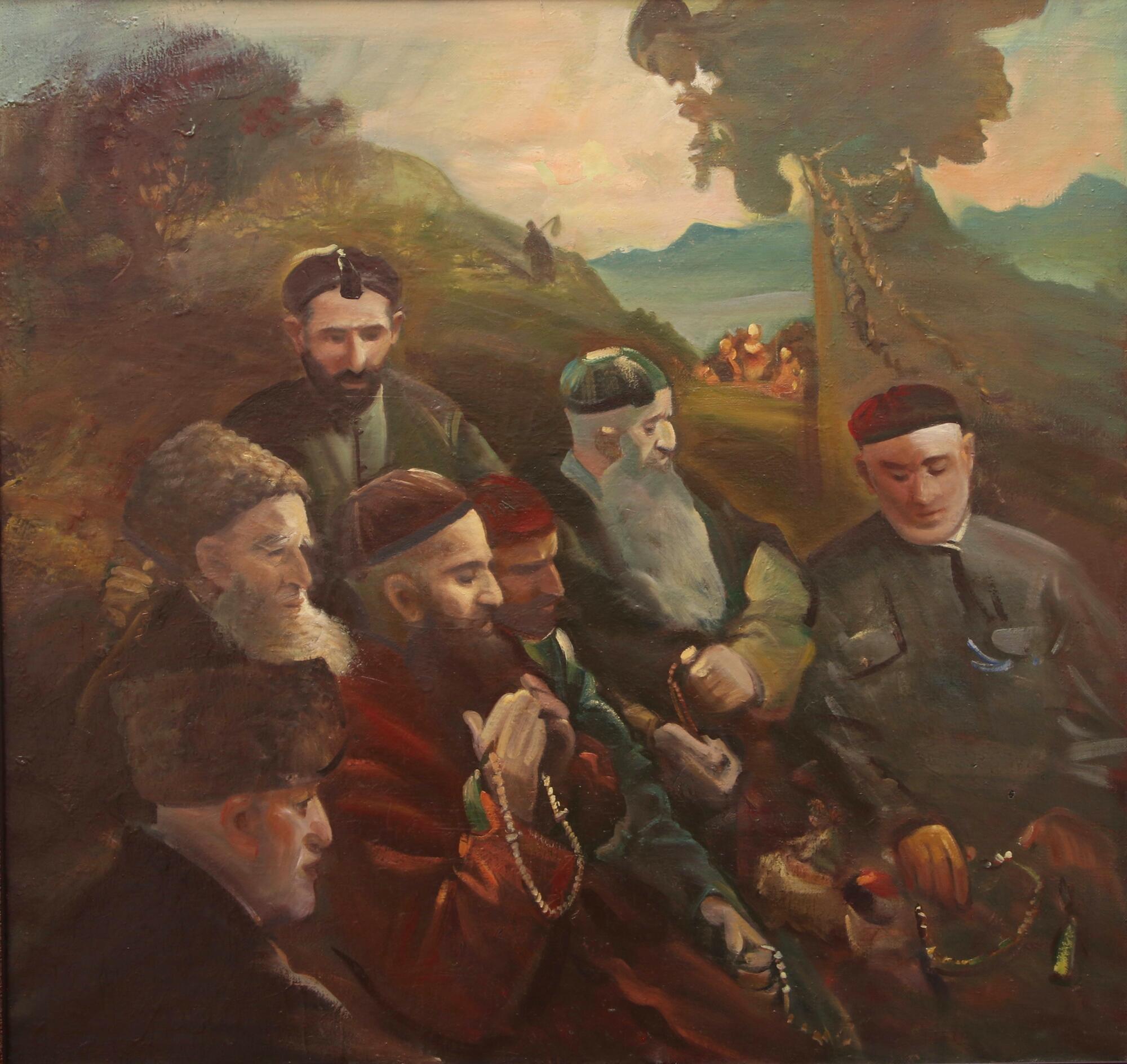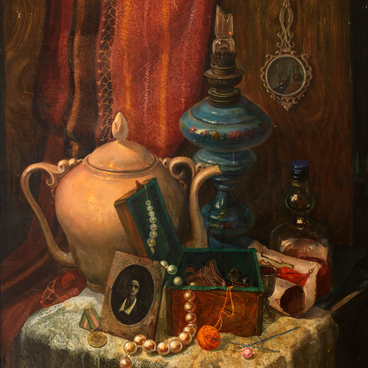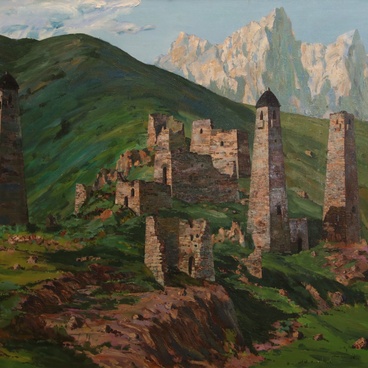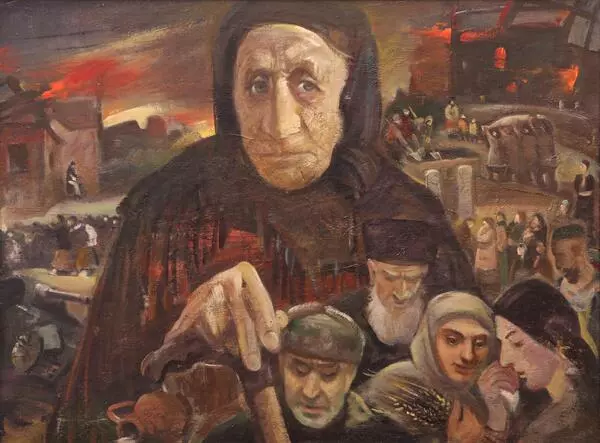The mature artworks of Zelimkhan Esmurziev are distinguished by philosophical reflections on faith and spiritual experiences of people.
In this painting, the artist depicted namaz (salah), a Muslim prayer. He depicted men of different ages surrounded by nature who gathered for a collective prayer. The collective prayer is an essential part of Islam. It represents spiritual unity of people, regardless of their social status or age.
The artist depicted the worshippers in proper clothes: with papakhas and tubeteikas (caps). After the adoption of Islam, tubeteikas, flat or domed skullcaps without brims, became an important attribute for the Ingush people. They were considered an obligatory item of clothing for praying, as speaking to Allah with an uncovered head was a sign of laziness and negligence. Muslims were obliged to dress in clean clothes and wear a headdress. According to different sources, it was believed that the tubeteikas also defended humans from evil spirits. The four parts of the cap were perceived as four periods of human life: childhood, youth, maturity, and old age.
The artist depicted the characters with prayer beads, an essential attribute for prayers. The classic Muslim prayer bead consists of 99 beads. They set the pace of the prayer and help the believers to count dhikrs, special praises to Allah. They also help to concentrate on the spiritual action and ignore the outside world.
The Ingush adopted Islam not very long ago. There were three stages in the religious history of the Ingush people: pagan, Christian, and Muslim. Paganism with its rich folklore and legends was prevalent up until the end of the 19th century. At the same time, Christianity and Islam developed in parallel to each other for many centuries. Christians from different countries, presumably since the times of the Byzantine Empire in the 11th and 12th centuries, actively organized missions and sent them to Ingushetia. During some periods, they intensified, then weakened, but never stopped. At the same time, the Islamization of the Caucasus was also underway.
The turning point is considered to be the middle of the 19th century, when the Ingush people, both in the mountainous regions and the ones who lived on the plains, finally converted to Islam.
In this painting, the artist depicted namaz (salah), a Muslim prayer. He depicted men of different ages surrounded by nature who gathered for a collective prayer. The collective prayer is an essential part of Islam. It represents spiritual unity of people, regardless of their social status or age.
The artist depicted the worshippers in proper clothes: with papakhas and tubeteikas (caps). After the adoption of Islam, tubeteikas, flat or domed skullcaps without brims, became an important attribute for the Ingush people. They were considered an obligatory item of clothing for praying, as speaking to Allah with an uncovered head was a sign of laziness and negligence. Muslims were obliged to dress in clean clothes and wear a headdress. According to different sources, it was believed that the tubeteikas also defended humans from evil spirits. The four parts of the cap were perceived as four periods of human life: childhood, youth, maturity, and old age.
The artist depicted the characters with prayer beads, an essential attribute for prayers. The classic Muslim prayer bead consists of 99 beads. They set the pace of the prayer and help the believers to count dhikrs, special praises to Allah. They also help to concentrate on the spiritual action and ignore the outside world.
The Ingush adopted Islam not very long ago. There were three stages in the religious history of the Ingush people: pagan, Christian, and Muslim. Paganism with its rich folklore and legends was prevalent up until the end of the 19th century. At the same time, Christianity and Islam developed in parallel to each other for many centuries. Christians from different countries, presumably since the times of the Byzantine Empire in the 11th and 12th centuries, actively organized missions and sent them to Ingushetia. During some periods, they intensified, then weakened, but never stopped. At the same time, the Islamization of the Caucasus was also underway.
The turning point is considered to be the middle of the 19th century, when the Ingush people, both in the mountainous regions and the ones who lived on the plains, finally converted to Islam.




